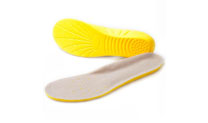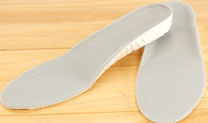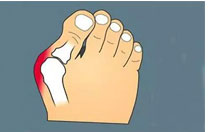In a 2011 study, researchers at the University of Wisconsin found that increasing stride frequency can reduce the impact on runners. Through the subtle increase of walking frequency, the pressure on hip and knee joint during running can be reduced, and the common injuries related to running can be prevented and treated.
Running is for health, but about 65-75% of runners suffer from injuries every year, which makes running a high injury rate sport. Researchers have found that too much stride during running is one of the important reasons for runners'injuries.
The stride is the distance between the heel and the projection point of the center of gravity of the body on the ground when the front foot landed. Anatomically, the center of gravity is located in the fifth segment of the spine. Beyond this distance, it's too big a step. Studies have shown that excessive stride increases stress on the body. Some runners have enough strength to absorb these stresses, but not everyone can. Moreover, even if there is enough strength, it may not be able to effectively digest the pressure brought about by excessive strides.
To make matters worse, too much stride means that the longer your vertical movement distance is, the more difficult it will be to land when you jump high in the air. This is also one of the high-risk factors for running injuries. Moreover, when the stride is too large, the knee will become straighter, and the heel will be stronger when landing, which will significantly reduce the knee muscle's ability to absorb impact force. This impact is transmitted to the meniscus of the knee, the knee joint, and the hip and back joints.
So, since we know the harm of excessive stride, what measures should be taken to reduce the harm?
First, step frequency is increased by 5%.
Posture corrective heel cups,In a 2011 study, researchers at the University of Wisconsin found that increasing stride frequency can reduce the impact on runners. Through the subtle increase of walking frequency, the pressure on hip and knee joint during running can be reduced, and the common injuries related to running can be prevented and treated.
Runners can count their stride frequency, see how many strides their right foot has taken in 30 seconds, and multiply by 4. The final number should be between 145 and 190, ideally 170 and 190.
Second, gradually reduce the thickness of the foot posture corrective heel cups. If your current heel pad is 12 mm thick, the next pair of shoes may be 8 mm thick. Shoes with thin heel pads are generally less complex and less rigid, allowing the foot to run in a more natural state.


